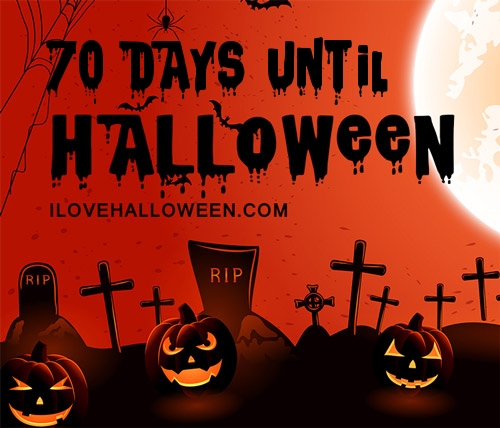Starring: Giuseppe Lorusso, Federica Quaglieri, Emanuele Cerman, Silvia Ferreri, Michael Segal, Cristiana Vaccaro, and Roberta Marrelli
Director: Ivan Zuccon
Rating: Five of Ten Stars
Alex (Lorusso) and Rita (Quaglieri), while working on Alex's latest book, investigate an abandoned inn with a reputation for being haunted, cursed, and generally just Plain Bad News. While they wander through the decaying structure, Rita starts having disturbing visions as the past and present being to collide, and the evil in the house reawakens....

"The Shunned House" is a kinda-sorta anthology film that loosely adapts three Howard Lovecraft short stories. I say kinda-sorta, because all three stories are intermixed, unfolding in an almost random order, with bits of other hauntings that take place in the inn creeping in around the edges. The tales flow in and out of one another, with sometimes no more than a lighting change or a switch in the musical score to alert the viewer to the fact that we have switched storylines again.
The three stories that take place in three different time frames are intermixed, as Rita has visions and nightmares during her stay in the decaying rooms of the Crossroads Inn. The grisly and mysterious death of a sleepwalking mathematician whose formulas may have opened doors that should have stayed closed during the 1940s (an adaptation of "Dreams in the Witch-House"), and a writer and a young girl who spends her nights playing music to keep demons at bay during the 1920s (an adaption of "The Music of Erich Zann"), are interspersed with the modern day developments of Rita growing increasingly sick from the house's influence while Alex takes notes for his book (an adaptation of "The Shunned House"). There may also be a fourth storyline... I can't quite make sense of where the torturer, his victim, and his vengeful employer that appear at various points in the film, and I can't remember such elements in any of the three stories adapted here (although it has been several years since I've read any of them), but it's the only one that seems to feed directly into the overall developments relating to Alex and Rita.
The way the storylines of the film are presented is both a strength and a weakness. On the one hand, the jumbled, organic nature of their presentation gives a dream-like quality to the movie that feeds the sense of unease and horror it so expertly invokes, but, on the other hand, only one of the stories actually reaches a conclusion, and none of them fully manages to build to the fever ptich of terror that is the hallmark of a Lovecraft plot. ("The Music of Erich Zann" is the one that comes closest, and even it doesn't quite manage to capture the sense of a Lovecraft climax.)
Part of the problem with the adaptations here lies, I think, with a lack of understanding on the part of the screenwriters of what makes a Lovecraft climax work. I think that when stripping out the florid language that makes his stories such interesting reads (but which can, of course, never be brought into a movie) they failed to notice that while his stories always end with copious unanswered questions, they do end. With the exception of the storyline of the violinist playing to ward off demons from the darkness, every plotline here just sort of trails off. Unlike a Lovecraft tale, we don't get a climax in the end, but just unanswered questions.
Another weakness of the film is the actors. While they are far better than what I've seen in many movies of this type, they are still come up short. The worst of the bunch are Giuseppe Lorusso and Federica Quaglieri, not so much because they are individually all that bad, but because there is no on-screen chemistry between them whatsoever... and this is a vitally important aspect to make us care about the characters and to make a third-act revelation by Alex have any real impact on the viewers. (The two other on-screen couples are somewhat better--with Emanuele Cerman and Silvia Ferreri in the "Dreams in the Witch-House" segments being the stongest performers of the bunch.)
For all those complaints, though, this movie was a fine viewing experience, far better than I had expected.
The photography, lighting, and production design on this film are spectacular. It is plainly shot on video, but it has virtually none of the flat quality that many of films recorded on that media do, and there's nothing cheap or substandard about the technical work that is on display here; the film looks better than many horror movies that were made for twenty times the cost of "The Shunned House".
The high-quality photography and lighting is complimented by an equally impressive display of skill on the part of the sound designers and the composer of the musical score. Many scenes include subtle ambient sounds that serve to heighten the creepiness and mystery of the haunted inn. I was also impressed with the musical cues that are used to help the audience keep track of the mystical flashbacks when first start fading in and out. Very few low-budget movies are blessed with music as well-done as what we find here.

Even more, the violin music in the "Music of Erich Zann" storyline is nothing short of amazing. It's the one place where I must eat my words that Lovecraft's "florid prose" can't be presented on the screen--the music that Carlotta Zann plays late at night is supposed to be unlike anything protagonist Marco has ever heard, and we are presented with haunting, unusual music that actually makes us believe it's possible. (The audio distortions--part of the music actually being run backwards?--that get added to the music at points in the story makes it even more believable. For a sample of the violin music in question, visit the official website devoted to the film. Make sure you have the sound turned up on your computer.)
"The Shunned House" is a film that's visually striking and technically competent in every way. It manages to create and maintain a sense of dread throughout its running time, and I wish I could like more than I do. There are so many good things about it, but the weaknesses of the film loom large when it is viewed. They are severe enough that this barely rises to the level of an average movie, and I really wish I could have given it a better score in the end.
Still, this is a film that the creators of big-screen crapfests like "Boogeyman" and "The Skeleton Key" would have been well-advised to have seen and emulated when they did their films, as Ivan Zuccon did far more with far less than they did. It should also be considered a must-see by anyone out there who is considering making their own low-budget horror film. This is (in everything except the story) an example of how it should be done.



















No comments:
Post a Comment